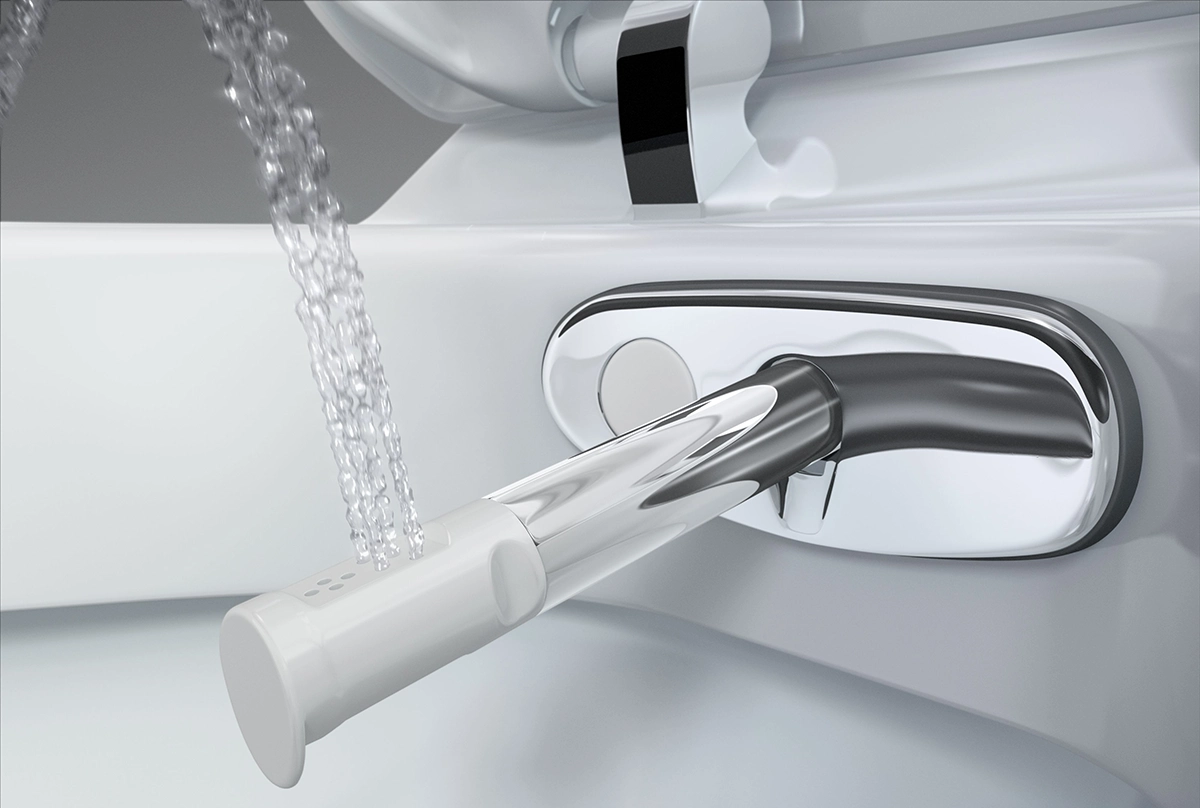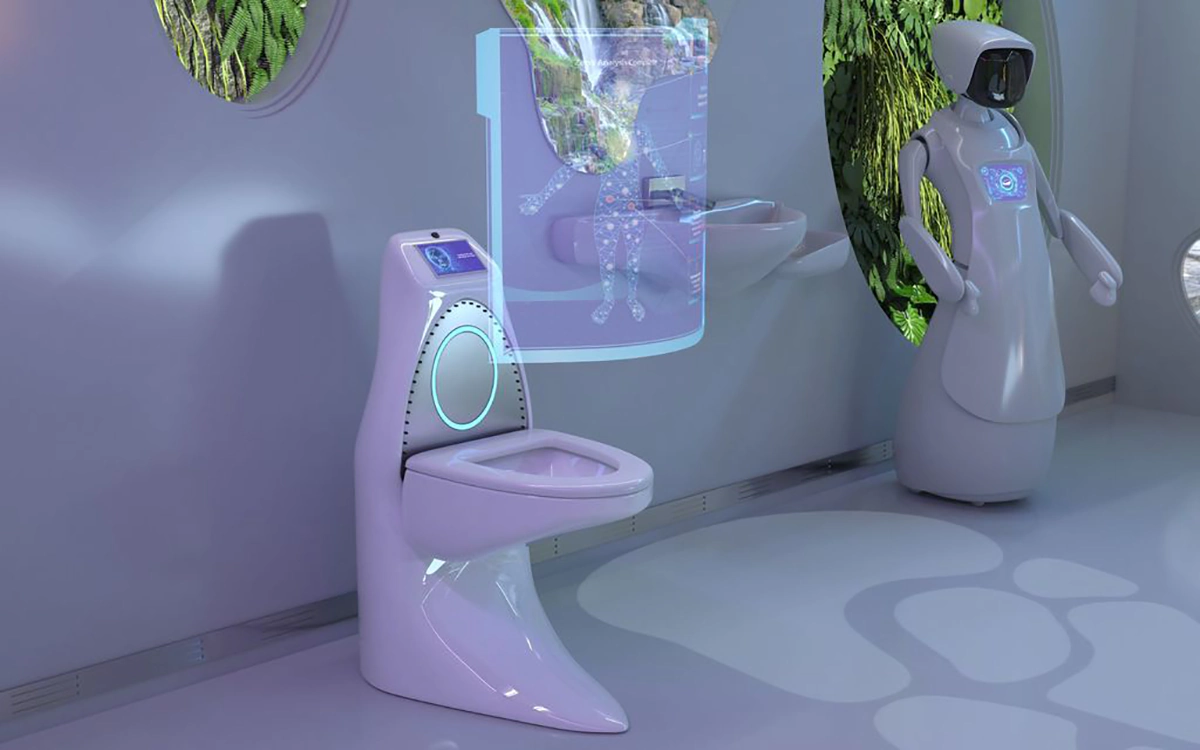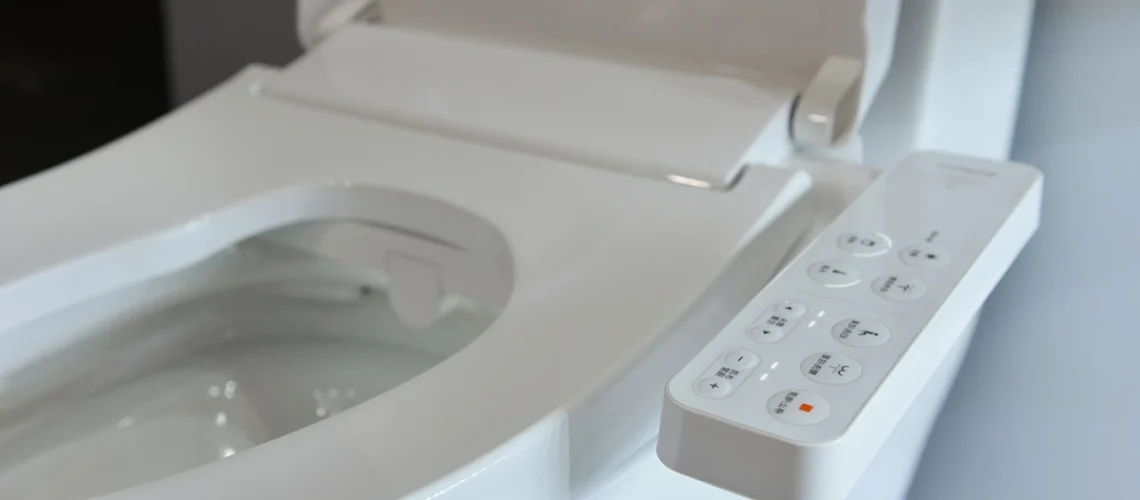Modern technology has made its way into every aspect of our lives, and the bathroom is no exception. The emergence of smart toilets has transformed the way we think about bathroom fixtures. These cutting-edge devices offer a range of features that go beyond the basics of traditional toilets. In this comprehensive guide, we will explore what smart toilets are, their benefits, and how to use smart toilet.
Contents
What is a Smart Toilet?
Smart toilets are a remarkable fusion of technology and convenience, redefining our bathroom experiences. Unlike conventional toilets, smart toilets incorporate a variety of advanced features that enhance hygiene, comfort, and sustainability. From bidet functionalities to personalized settings, these fixtures cater to a wide range of user preferences.
How Does a Smart Toilet Work?
Smart toilets use sensors to detect users, triggering features like bidet sprays and seat heating. Controls allow customization, and water-saving flush options enhance efficiency.
Benefits of Smart Toilets
Smart toilets come with a host of advantages that make them a compelling addition to any modern bathroom.

Enhanced Hygiene and Cleanliness Features
One of the significant advantages of smart toilets is their focus on cleanliness. They often feature built-in bidet functionalities that allow users to cleanse themselves with water, providing a more thorough and hygienic cleansing experience compared to using toilet paper. This is particularly beneficial for maintaining personal hygiene.
Water-Saving Capabilities and Environmental Benefits
Smart toilets are designed to be eco-friendly by utilizing water-saving technologies. They typically have adjustable flushing options, allowing users to select the appropriate amount of water needed for each flush. This not only reduces water consumption but also contributes to water conservation and a greener environment.
Improved Accessibility and User-Friendliness for All Ages
Smart toilets are designed with accessibility in mind. They often come with user-friendly controls, making them suitable for people of all ages, including children and the elderly. Some models even feature automatic lids, eliminating the need for physical contact. This accessibility is particularly beneficial for individuals with limited mobility.
Understanding Smart Toilet Features
Smart toilets are equipped with a range of features designed to enhance user comfort and hygiene.
Built-In Bidet Functionalities and Their Advantages
Personal Hygiene: Bidet functionalities provide thorough cleaning, promoting better personal hygiene and reducing the reliance on toilet paper.
Reduced Irritation: The gentle water spray minimizes irritation and discomfort compared to using dry toilet paper.
Heated Seats and Personalized Comfort Settings
Customized Comfort: Heated seats with adjustable temperature settings offer a luxurious and comfortable experience, especially during colder seasons.
Individual Preferences: Users can set their preferred seat temperature for a personalized touch.
Deodorizing and Air-Purification Mechanisms
Odor Elimination: Smart toilets often include deodorizing mechanisms that help eliminate unpleasant odors, enhancing the overall bathroom experience.
Air Purification: Integrated air-purification systems ensure the air within the toilet bowl remains fresh and clean.
Comparing Smart Toilets vs. Traditional Toilets
When deciding between a smart toilet and a traditional toilet, it’s essential to consider various factors.

|
Feature |
Smart Toilets |
Traditional Toilets |
| Functionality | Advanced features like automatic flushing, heated seats, built-in bidets, air dryers, and remote control. | Basic flushing mechanism, manual operation. |
| Cost | Higher initial cost due to advanced technology and features. | Lower initial cost. |
| Installation | May require professional installation due to electrical and complex plumbing requirements. | Easier to install, typically requires basic plumbing skills. |
| Hygiene | Enhanced hygiene with hands-free operation and built-in bidets. | Manual operation, standard hygiene level. |
| Comfort | Higher comfort with adjustable settings, heated seats, and other features. | Standard comfort. |
| Water-Saving Features | Often include water-saving technologies such as dual-flush systems. | May or may not have water-saving features. |
| Ease of Cleaning | Self-cleaning features and special coatings to prevent dirt and bacteria buildup. | Requires manual cleaning. |
| Maintenance | Requires more regular maintenance for electronic components and features. | Lower maintenance requirements. |
| Suitability | Best suited for modern bathrooms with appropriate infrastructure. | Suitable for all types of bathrooms. |
| Accessibility | Better for elderly or disabled individuals due to automated features. | Standard accessibility. |
Efficiency and Water Usage Comparison
- Water Efficiency: Smart toilets offer adjustable flush settings that optimize water usage based on waste type, while traditional toilets use a fixed amount of water per flush.
- Water Conservation: The ability to adjust flush volumes contributes to water conservation and lower utility bills.
Long-Term Cost Analysis of Smart Toilets
- Initial Investment vs. Savings: While smart toilets have a higher initial cost, their water-saving features can lead to substantial long-term savings on water bills.
- Environmental Impact: The water conservation benefits of smart toilets contribute to reducing your ecological footprint.
Maintenance and Installation Considerations
- Maintenance: Smart toilets require regular cleaning, but some models come with self-cleaning mechanisms that simplify maintenance.
- Professional Installation: Due to their electrical and plumbing components, professional installation is recommended to ensure proper functionality.
Installation and Setup Process
Installing a smart toilet involves important decisions and steps.
Hiring a Professional vs. DIY Installation
- Professional Installation: Hiring a professional ensures correct installation, minimizing the risk of errors that could affect the toilet’s performance.
- DIY Installation: DIY installation is an option for those with plumbing and electrical expertise, but it’s crucial to follow manufacturer instructions carefully.
Smart Toilets and the Future
Smart toilets are more than just a bathroom trend; they are shaping the future of bathroom technology.

- Continued Innovation: As technology advances, we can expect even more sophisticated features, such as integrated health monitoring and seamless smart home integration.
- Enhanced Comfort: Future smart toilet models will likely focus on providing even greater comfort, convenience, and personalization.
In conclusion, smart toilets are an exciting advancement in bathroom technology, offering enhanced hygiene, comfort, and sustainability. Understanding their features, benefits, and installation considerations empowers you to make an informed decision. As technology continues to evolve, embracing smart toilets paves the way for a more convenient and connected bathroom experience.
FAQ about the operation of a smart toilet and how to use it
Smart toilets incorporate advanced features like bidet functionalities, heated seats, and customizable settings that enhance hygiene and comfort.
Installation difficulty varies. While some DIY enthusiasts can handle it, professional installation is recommended for proper setup due to plumbing and electrical components.
Regular cleaning suffices, but some models have self-cleaning features. Manufacturer guidelines ensure the right approach.
Smart toilets are worth the money for their enhanced hygiene, comfort, and sustainability features, making them a valuable addition to modern bathrooms.



